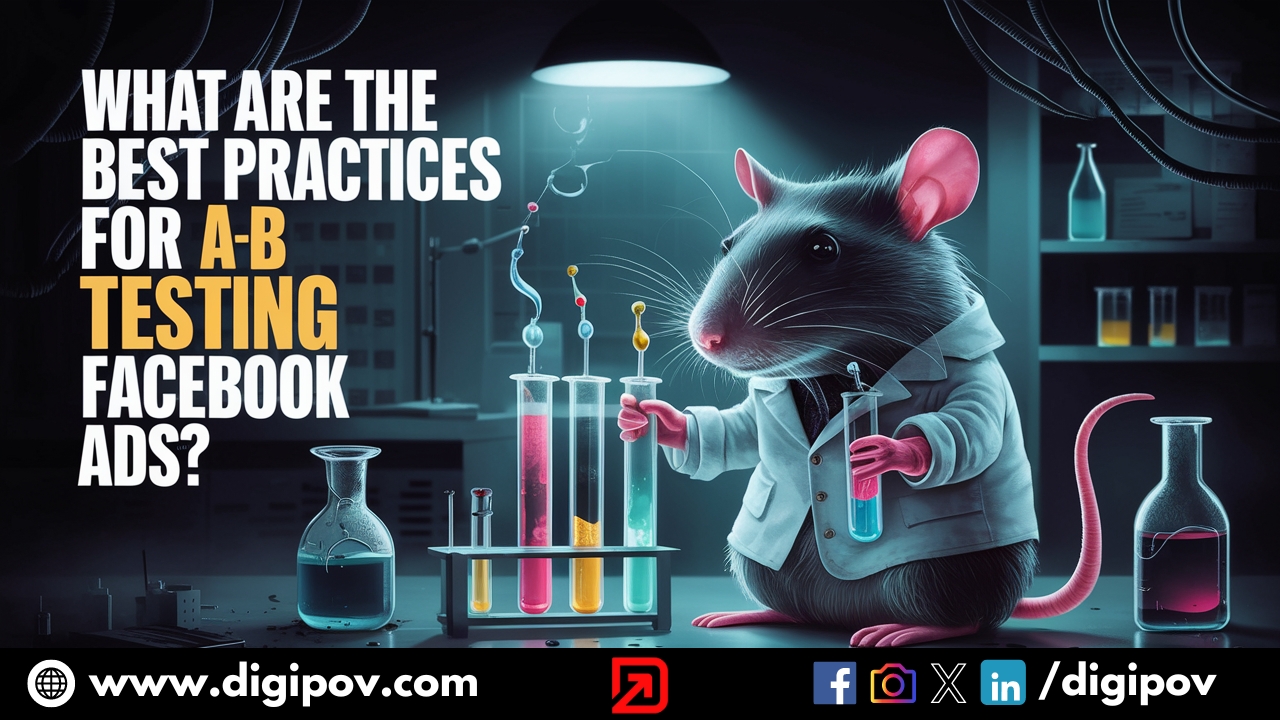Testing is always important to know your ways of advertising. Most people don’t do testing primarily because of low funding or because they fear wasting money on ads. But if you want to get the most out of your ads, you should and must do testing. Every digital marketer can benefit from A/B testing which enables us to determine what aspects of advertising are working and not-working. As Facebook is one of the most widely used platforms for advertising, it’s essential to understand the best practices for A/B testing Facebook ads. I’ll go over the best techniques that you can use for conducting practical A/B tests on Facebook in this article.
Defining objectives
Before launching any campaign, Facebook gives us a list of objectives that we want to optimize as our end goal. It can be brand awareness, lead generation, page likes, conversions, etc. Based on your end goal, setting defined objectives is essential before you start with testing. The objectives and the KPIs (key performance indicators) you’ll use to measure must be clear. You can design better tests and make more informed conclusions if you have a defined goal.
Test one variable at a time.
As a beginner, testing many variables will confuse you. So keeping your testing to a limit or just testing one variable at a time is better if you are a beginner. When starting a campaign, it’s better to only test one variable at a time when doing an A/B test. You can only tell which variable affected the result if you test several different ones. And it can save time and money and result in correct conclusions. By testing one variable at a time, you may adequately determine what changes made your ads successful and resulted in the most conversions.
Note: You may get different results for some ads. So keep testing and keep improving your ads based on data.
Keep your test groups separate.
During testing ads, you may have to test your ads with different age groups or demography. To determine which is working best with which demography, try to maintain separation between your test groups when doing an A/B test. It means you should only present each group with one ad version. You will only be able to judge which ad did better if you do not mix the groups or display both versions of the ad to the same group of people. This is because it can lead to wasting time and money and providing the wrong conclusion.
Use a large enough sample size.
A big enough sample size is necessary to verify that the findings of an A/B test are statistically noteworthy. Findings from tests with a small sample size might not be trustworthy and accurate. It may lead you to the wrong conclusions and waste your time and resources. You need to use a large sample size. The larger the sample size, the more accurate your results will be. A good rule of thumb is to have at least 100 conversions per variation before making any decision.
Test over a long enough period.
Testing is always better while running ads on Facebook or any other platforms as it can give us notes on improving your ads and getting more results. And being patient is also essential, as you don’t want to hurry and ruin your progress. So while performing A/B tests, it’s best to test for a longer time to guarantee that the results are of quality. You must get a clear vision of how your ads work over time if you test them for a short period, which can save time and money and result in wrong deductions. It would be best if you always thought about how long your sales process is and how long your ads will produce noticeable results when you choose the correct test period.
Use a control group.
It is critical to have a control group when performing an A/B test. A control group either doesn’t view the advertisement or sees the original version of the advertisement. You can then compare the results of the test group and the control group. The effect of your advertisement on your target audience can be ascertained using this information.
Monitor your results regularly.
Optimizing and monitoring is a daily job you must do while running ads online. It’s essential to check your results when doing an A/B test regularly. You can spot any problems early on and adjust for better performance. You should make wise selections and improve the performance of your ads by keeping an eye on your conversions.
Use clear and concise messaging.
Facebook also suggests giving your audience a correct and easy-to-understand message which can increase conversions. So keeping clear and straightforward language as it is necessary when doing an A/B test. Your messaging should be simple to understand and make it apparent what values your good or service offers. Giving a short and straightforward message can boost conversion rates and click-through rates.
Implement Gradual Modifications
Over time, make minor, gradual modifications when adjusting your Facebook ads. Changing one variable is required, little by little at a time. Try to avoid making significant adjustments that can hurt the effectiveness of your ads. It will assist you to understand what is working and what is not.
Test across multiple platforms.
Don’t test with creatives, Ad copies or demography; try testing across many platforms and placements if necessary. Testing across many platforms/placements is significant when running an A/B test. Testing will enable you to understand which platforms/placements are not the most effective for your advertisement. You may optimize your ads for better performance and a larger audience by testing across various platforms/placements.
Use automation tools
Facebook allows you to test on its platform and run A/B test ads from Facebook itself. But you can use any automation tools available online to be more efficient. The ability to A/B test your Facebook advertising is made possible by a variety of third-party solutions. Using these tools, you can automate testing, evaluate your results, and improve your advertising efforts. AdEspresso, Optimizely, and Unbounce are a few well-liked A/B testing solutions.




